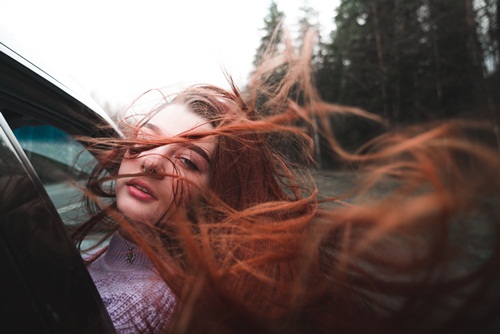
Imagine a world in which our senses of sight, sound, smell, taste, and touch were all intertwined. What if we could physically see the colour of the song we were listening to? Or if we could taste a word or a sound in our head? What if every day of the week had a colour and a shape? Imagine being able to taste the words of this article as you read it. Sounds crazy, doesn’t it? If you’re one of the readers who said, “Duh, isn’t that how it works?” to any of the sentences above, then congratulations! You belong to the lucky 4% of the population who share a rare neurological condition called synesthesia.
Synesthesia occurs when two or more senses are crossed or blended, in which one sense triggers or stimulates an automatic involuntary experience in another. The word synesthesia is derived from Greek words syn meaning union, and aesthesis meaning sensation. Therefore, synesthesia is a union of sensations. Different synesthetes show different symptoms—some can hear colours, some can feel sounds, others can taste shapes, etc.
One in 2,000 people experience this trait. Sounds like a magical ability, doesn’t it? Many synesthetes don’t realise that they have the condition. They assume that everyone around them possess the same sensory mixtures. Research shows that people with synesthesia are born with this trait or develop it early in their childhood. This condition can be genetically inherited. It has also been suggested that children who intensively engage with abstract concepts in their early childhood tend to develop traits of synesthesia. So, what is the science behind this one-of-a-kind condition? Scientists are still trying to figure out the cause of it, although many believe that synesthesia occurs when there are excess neural connections between parts of the brain responsible for sensory stimulus. Where there is normal segregation of neural connections in non-synesthetic individuals, there exists a kind of abnormal or atypical cross-wiring of neurons in synesthetes.
Simon Baron-Cohen, a researcher who studies synesthesia at the University of Cambridge, proposed that, ‘synesthesia results from an over- abundance of neural connections. Usually, each of the senses is assigned to separate modules in the brain, with limited cross-communication. In the brains of people with synesthesia, the walls are broken down, and there is more communication among the modules.’
Daphne Maurer, a psychologist at McMaster University in Ontario suggested another theory, that, ‘everyone has these connections, but not everyone uses them. Those who use the connections are the ones who experience synesthesia.’
There are over 80 types of synesthesia. Grapheme colour synesthesia is the most common form of synesthesia, where alphabetical letters and numbers appear to be shaded with a colour. For example, the letter ‘A’ is associated with the colour ‘blue’. Chromesthesia, or ‘coloured hearing’, is another common form of synesthesia where individuals automatically see flashes of shape and colour when they hear a sound or a musical note or vice versa, i.e. they can hear sounds when they see a particular colour.
Mirror-touch synesthesia involves feeling sensations that other people experience, such as pain and touch, as if it were happening to you. For example, when you see two people shaking hands, you physically feel like you’re the one shaking hands with them. People with this condition are said to have higher levels of empathy as compared to the general population. With only 0.2% of the synesthete population having it, lexical-gustatory synesthesia is one of the rarest forms, in which certain tastes are experienced when a person hears a word or a sound. For ex- ample, the word baggage might taste like a sausage. Synesthetes are also seen to have superior memory, particularly towards items related to their synesthetic experiences. For instance, they can remember phone numbers based on number–colour associations, or remember musical notes based on the colour they see. Another fact shows that synesthetes are more likely to follow a creative profession.
Billie Eilish, Kanye West, Beyoncé, Pharrell Williams and Lorde are some of the famous music artists who have synesthesia and all of them claim that synesthesia has enhanced their creative ability. You might think that being bombarded with so much sensory stimulation could be overwhelming to those who experience it, and yes, you are right. But such instances are rare as many synesthetes say that the condition is more of a boon than a bane.
This neural diversity proves how different and unique each person’s sensory perception of the world is. It’s crazy how two people can see the same object quite differently. It makes us think about the endless possibilities of diverse perspectives out there. Sometimes we become ignorant, forgetting that there is a world beyond our own eyes. Why do we restrict ourselves
in the way we perceive the world? What if we opened our minds, and asked others, ‘what does it feel to be you?’ Think about how much we could learn! We have grown so comfortable seeing the world only through our own eyes. Why not take a step back, and see the world through the eyes of another? Let us embrace empathy and a new understanding!
∎